
Date: July 8, 2021
Location: Lat: 35.819207°, Lon: -52.305386°
Dive depth range: 4,096 - 4,187 meters (13,737 - 13,438 feet)
Access Dive Summary and ROV Data
During Dive 05 of the 2021 North Atlantic Stepping Stones, we encountered this worm in the genus Swima — a rather descriptive name given that we saw it swimming in the water column! Members of the onshore science team identified the worm as potentially a green bomber worm (Swima bombiviridis), so named because it has sacs of bioluminescent fluid from which, when disturbed, it can release a glowing green “bomb.” This burst of light distracts potential predators so that the worm can escape. Video courtesy of NOAA Ocean Exploration, 2021 North Atlantic Stepping Stones: New England and Corner Rise Seamounts. Download largest version (mp4, 65.7 MB).
A “water walker” isopod, in the family Munnopsidae, drifts slowly to the seafloor. was seen at a depth of 4,113 meters (2.6 miles) while exploring Rockaway Seamount on the fifth dive of the 2021 North Atlantic Stepping Stones expedition. Video courtesy of NOAA Ocean Exploration, 2021 North Atlantic Stepping Stones: New England and Corner Rise Seamounts. Download largest version (mp4, 50.3 MB).
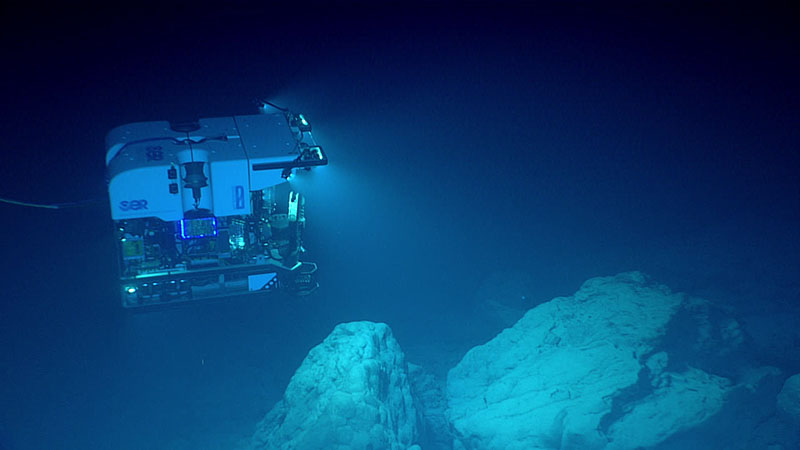
The lights of remotely operated vehicle (ROV) Deep Discoverer shine down on a rock outcrop during Dive 05 of the 2021 North Atlantic Stepping Stones expedition. Because ferromanganese crusts were relatively thin in places on these outcrops, geologists were able to identify the tops of pillow lavas as the ROV crossed over some of the outcrops. Image courtesy of NOAA Ocean Exploration, 2021 North Atlantic Stepping Stones: New England and Corner Rise Seamounts. Download largest version (jpg, 490 KB).
Dive 05 of the 2021 North Atlantic Stepping Stones expedition took place on the western flank of previously unexplored Rockaway Seamount, which is one of the northern- and western-most of the Corner Rise Seamounts. With a starting depth of nearly 4,200 meters (2.6 miles), this was one of the deepest dives ever conducted in this part of the Atlantic.
Given the depth, it was not a surprise to scientists that the overall diversity and density of benthic fauna throughout this dive was lower than what has been seen at shallower depths on other seamounts during the expedition. That said, we did see a greater diversity of life on the dive than was expected, with observations made of numerous sponges, corals, urchins, and squat lobsters as well as a number of swimming invertebrates (but no fish). A diverse range of seafloor substrate types and bottom morphologies were encountered during the dive, including high-relief rock outcrops with scattered sediment and rock debris, extensive sediment plains with ferromanganese-coated rocks scattered across the sediment surface, and rock outcrops with complex volcanic flow morphologies.
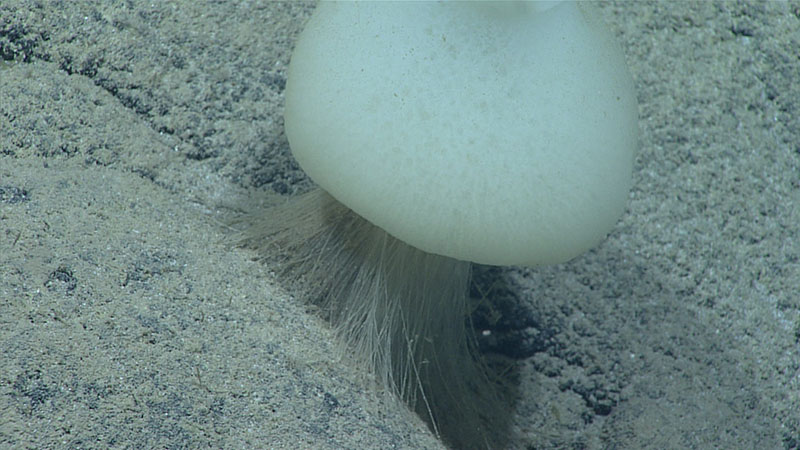
Sponges were the most abundant type of life seen during the fifth dive of the 2021 North Atlantic Stepping Stones expedition. This hexactinellid glass sponge with several siliceous, fibrous rays attaching it to the seafloor was seen at a depth of approximately 4,140 meters (2.6 miles). Image courtesy of NOAA Ocean Exploration, 2021 North Atlantic Stepping Stones: New England and Corner Rise Seamounts. Download largest version (jpg, 1.1 MB).
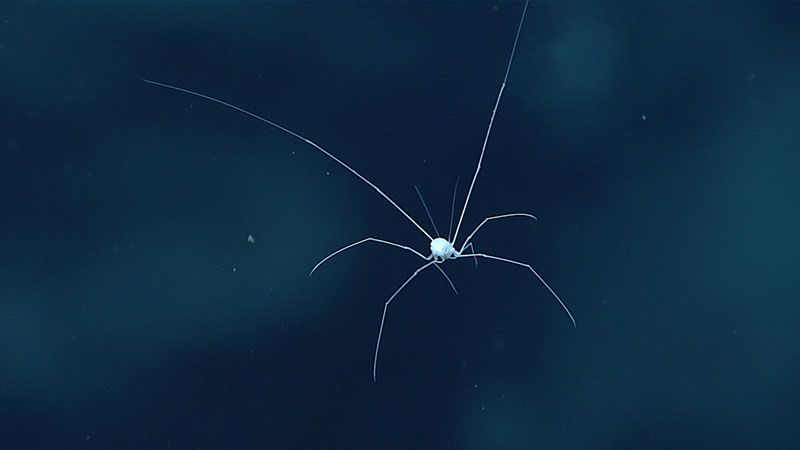
This “water walker” isopod, in the family Munnopsidae, was seen at a depth of 4,113 meters (2.6 miles) while exploring Rockaway Seamount on the fifth dive of the 2021 North Atlantic Stepping Stones expedition. It was one of several swimming invertebrates seen during the dive. We also saw polychaete worms, a swimming cucumber, and several shrimp-like mysids. Image courtesy of NOAA Ocean Exploration, 2021 North Atlantic Stepping Stones: New England and Corner Rise Seamounts. Download largest version (jpg, 677 KB).
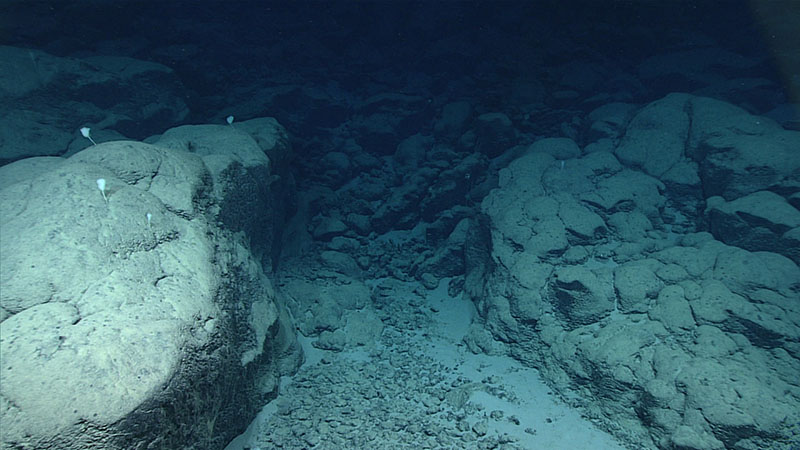
Near the end of the fifth dive of the 2021 North Atlantic Stepping Stones expedition, we saw this rock debris flow channel and possible rock dam. A rock, the final sample of the dive, was collected here. Image courtesy of NOAA Ocean Exploration, 2021 North Atlantic Stepping Stones: New England and Corner Rise Seamounts. Download largest version (jpg, 1.1 MB).
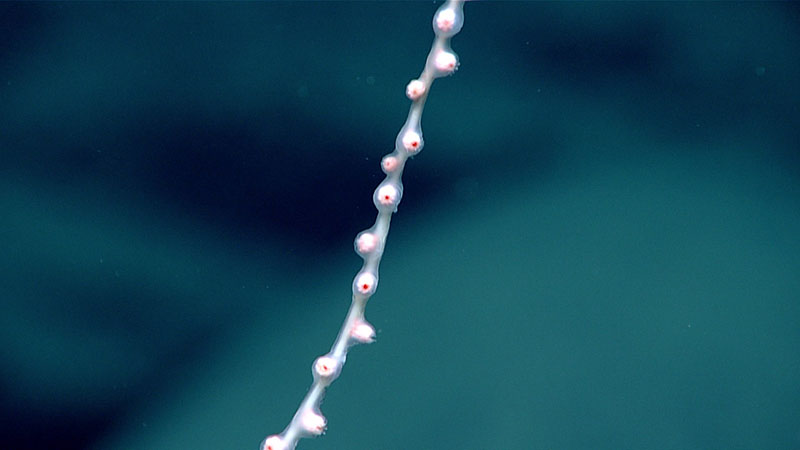
We collected a sample of this bamboo coral from the genus Bathygorgia shortly after the start of Dive 05 of the 2021 North Atlantic Stepping Stones expedition at 4,165 meters (2.6 miles) depth. It set a potential new depth record for this genus and may also be a new species. We saw several representatives of this coral throughout the dive track. Image courtesy of NOAA Ocean Exploration, 2021 North Atlantic Stepping Stones: New England and Corner Rise Seamounts. Download largest version (jpg, 782 KB).
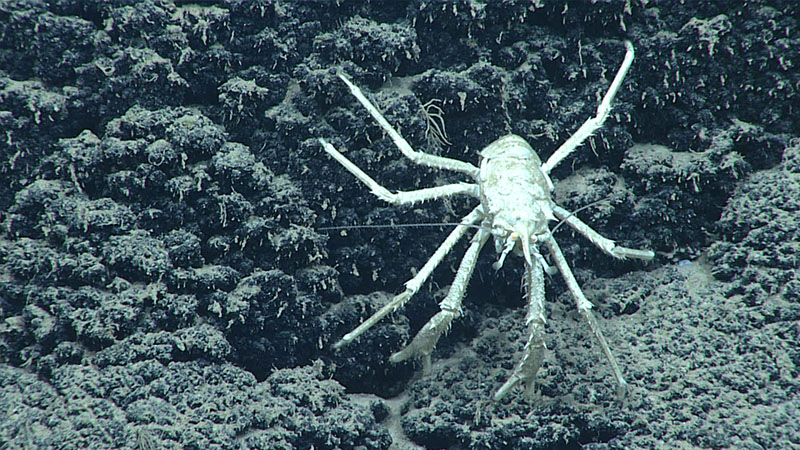
Throughout Dive 05 of the 2021 North Atlantic Stepping Stones expedition, we observed several of these squat lobsters in the genus Munidopsis on the faces of rocks and not in their more common association with sponges or corals. Image courtesy of NOAA Ocean Exploration, 2021 North Atlantic Stepping Stones: New England and Corner Rise Seamounts. Download largest version (jpg, 1.7 MB).
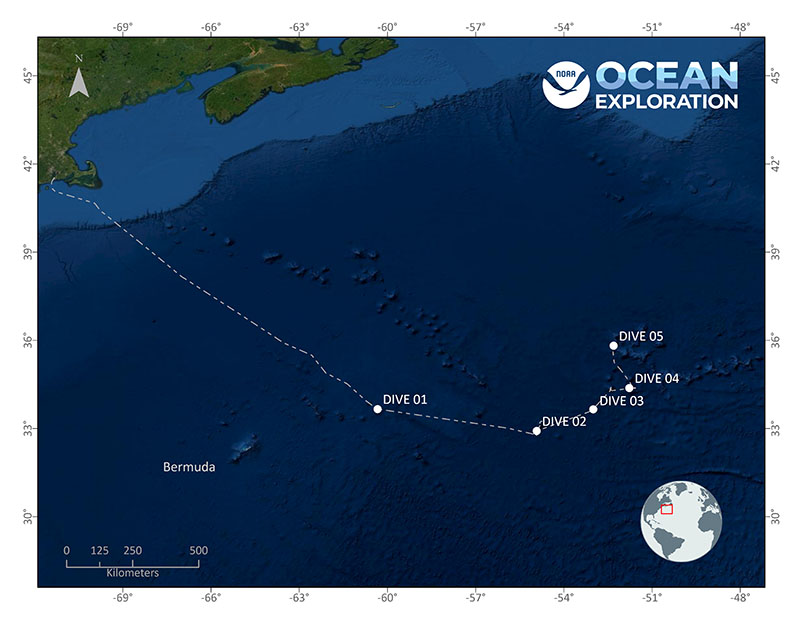
Location of Dive 05 of the 2021 North Atlantic Stepping Stones expedition on July 8, 2021. Map courtesy of NOAA Ocean Exploration, 2021 North Atlantic Stepping Stones: New England and Corner Rise Seamounts. Download largest version (jpg, 3 MB).
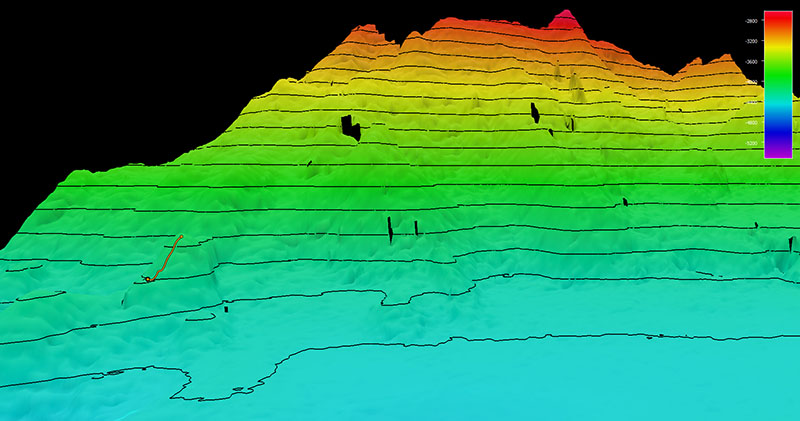
Image showing the dive track of Dive 05 of the 2021 North Atlantic Stepping Stones expedition. Scale is water depth in meters. Image courtesy of NOAA Ocean Exploration, 2021 North Atlantic Stepping Stones: New England and Corner Rise Seamounts. Download largest version (jpg, 788 KB).